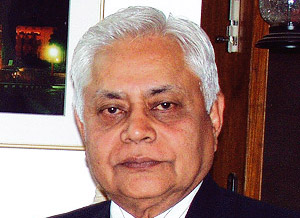INDIAN ARMED FORCES CHIEFS ON
OUR RELENTLESS AND FOCUSED PUBLISHING EFFORTS

SP Guide Publications puts forth a well compiled articulation of issues, pursuits and accomplishments of the Indian Army, over the years

I am confident that SP Guide Publications would continue to inform, inspire and influence.

My compliments to SP Guide Publications for informative and credible reportage on contemporary aerospace issues over the past six decades.
Viewpoint - Deterring the Dragon

It would be imprudent and somewhat premature to declare after the very first test launch of the Agni-V that India already possesses a credible deterrence against the Dragon
The successful launch of the Agni-V missile has thrown the nation and the media literally into a tizzy. Undoubtedly for the scientific community in India that is accustomed to witnessing failure as often as success, the feat at Wheeler Island off the coast of Odisha is definitely good reason to celebrate. The nation ought to be proud of this feat and the scientific community certainly deserves to be felicitated for this significant achievement.
Apart from the fact that it has propelled India into the elite club as the sixth country in the world to possess intercontinental ballistic missiles, the Agni-V is being projected as a weapon system that will provide the nation with a powerful strategic deterrence capability against China. The nuclear capable, road mobile missile system that has the range to cover nearly the whole of Asia, East Europe and almost nudging South African and Australian coastlines, reinforces the belief that India has indeed taken a huge step forward on the path to emerge as a regional power and that it can provide a nuclear umbrella to smaller nations who feel threatened by their gigantic neighbour—China. India has however always maintained that the Agni-V is not directed against any particular country and the capability is being developed in tandem with the growing stature of the nation in the region and the world.
Once the euphoria and excitement generated by the successful launch of Agni-V wanes, it would be time to take stock of the achievement and the way forward. Despite persistent denials by the government, one cannot get away from the fact that the primary motivation to develop ICBM capability is the escalating threat from China that has built up a massive nuclear arsenal with missiles such as the 11,200 km Dong Feng-31A capable of hitting any part of India even when launched from deep inside the country. Besides, China has a variety of long- and medium-range missiles deployed in Tibet and Xinjiang provinces targeted at India. China has also replaced older liquid-fuelled, nuclear-capable CSS-3 IRBM by the more advanced and survivable solid fuel CSS-5 medium-range ballistic missile (MRBM).
Despite the lofty rhetoric emanating from the strategic community in India, when viewed in the context of the formidable array of strategic weapons that China possesses, India is far behind. Besides, the possibility of closing the capability gap and achieving parity with China in the foreseeable future appears somewhat difficult if not impossible. The more viable alternative before India is to develop a second strike capability which the Agni-V being just a little more than a “technology demonstrator” in its present form, may not be able to offer. Firstly, India must have the capability to cover the whole of China with the missile launched from any part of the country. For such a capability, the Agni-V would need nearly twice the existing range. What is even more critical is the warhead. To have adequate destructive power, the warhead per force would have to be nuclear of sufficient destructive power to be meaningful. The precise state of development of the warhead and its integration with the delivery vehicle is not available in the public domain. However, what is known is that the Agni-V is also planned to have the capability to carry multiple independently targetable re-entry vehicles (MIRV). This payload is expected to have the capability to deliver up to ten nuclear warheads in a single launch assigned to different widely separated targets. Alternatively, two or more warheads can be assigned to a single target. The MIRV payload technology is highly complex and given the restrictive nature of international nuclear weapons regime, foreign assistance in this initiative is unlikely to be available. It may take a very long time before MIRV capability is developed indigenously and operationalised. And finally, the Agni-V or its successor would have to be deployed in sufficient numbers for a meaningful second strike capability.





